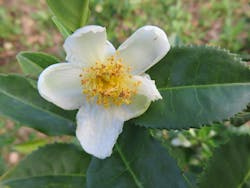3 Steps To Making Big Money With Tea
In the U.S. hot drink market, coffee is king. While that trend will continue, growing rapidly in the shadow of coffee’s success is tea. At the recent NAMA Show in Las Vegas, NV, representatives of Unilever and Teatulia gave an overview of tea’s current status in the "Tea – Why it Matters, What Consumers Expect and Why it Needs to Be Included in OCS" session April 24. The key takeaway, other than that tea people are passionate about tea, is that as far as the cost of goods is concerned, tea can be a big moneymaker for office coffee service providers. However, a few black tea bags won’t be enough. Instead, OCS providers will need to look at the trends and find options that will inspire employees and customers to pay premium prices for a new tea experience.
Step 1: Tell tea’s story
All teas, except for herbal teas, come from the same tea plant, Camellia Sinensis, the presenters stated at the Wednesday morning session. White tea comes from the buds and is the rarest, while black, green and ooling come from the leaves. Each has different curing processes. Black tea is the most fermented, oolong is semi-fermented and green is roasted or steamed instead of being fermented. However, the real story of tea isn’t how it’s cured. Instead, it is a story of sustainability and "origin character."
Allison Slater, senior manager at The Tea Company at Unilever Food Solutions, shared that Unilever’s tea plantation in Kericho, Kenya, was the first plantation to receive the Rainforest Alliance certification, accomplished in 2007. Unilever is also the largest tea company in the world with 35 brands, many of which have a rich history of doing good for the planet.
Linda Appel Lipsius, co-founder and CEO of Teatulia Organic Teas, provided a perspective of a smaller tea brand, but one no less steeped in a culture of sustainability. She talked about how tea was a beautiful craft beverage — but also a way to give back. She mentioned how it is a way to support companies that work with tea harvesting families and focus on the environmental impact of tea through packaging, either with recyclable canisters or biodegradable tea bags. Tea is a beverage that consumers can feel good about, says Lipsius. The themes of sustainability and transparency are essential to getting a return on tea.
“The authenticity and story of tea is a big part of it,” she said.
Abbe Kuhn, beverage innovation director at The Tea Company at UFS, added that much like coffee, tea can be traced back to its origin. In addition, each region imbues the tea with different flavors and characteristics. Kuhn used three examples in her presentation:
· Argentina produces tea with a mellowness, clarity and sparkle
· Malawi gives color, deep red hues
· Kenya grows tea with strong taste and “briskyness”
She called this “origin character," which is essentially the passing on of those territories and environment into the tea leaf Itself, a perfect story for experience-seeking millennials (85 percent of whom drink tea, according to the panel).
Step 2: Talk about wellness
As the quest for healthy eating and drinking continues, consumers are seeking a functional element to what they are consuming. All kinds of teas have been studied and correlated with positive healthy benefits, none more so than green tea.
There is also huge potential in tisanes and herbal teas. These are made from flowers, herbs and plants that are not Camellia Sinensis. Slater talked about how these “teas” offer distinct flavors and many are thought to have medical properties.
She offered a few common examples, such as peppermint tea from the leaves of a peppermint plant, which is associated with settling indigestion as well as chamomile, a tea made from the chamomile plant’s flowers and thought to help with relaxation.
Besides any associated wellness benefits, teas that mix and match these functional ingredients provide a new and unusual experience for consumers. This appeals to millennials who are out to discover foods that are unique and exciting, indicated the panel. Millennials are willing to pay a premium for this.
“Premiumization in tea is important,” said Slater. “You must have that overall variety – offer an element of discovery around tea.”
Step 3: Remind them it can be iced
All three panelists shared their experience with consumers who said they didn’t drink tea, but did drink iced tea. They found consumers did not view hot tea and cold tea the same way. In the U.S., 85 percent of the tea consumed is iced tea.
“Make people more aware that iced tea is tea,” encouraged Lipsius.
With sodas and sugary beverage consumption dropping, iced tea is in a position to pick up sales. When paired with the story and unique combination of flavors that provide a sense of adventure, it’s a profit-building product. The panel showed statistics that tea is a profitable and low-cost category for operators compared to other types of beverages. Based on a presentation slide detailing “profit margins example from commercial operators," tea got a 98 percent on profitability/low cost. By comparison, coffee got 81 percent, water got 75 percent and soft drinks, 38 percent.
Beverage consumption patterns are changing, and tea is on the rise. Look to unique, premium teas with interesting stories to really benefit from this evolving trend.
About the Author

Emily Refermat
Emily Refermat began covering the vending industry in 2006 and served as editor of Automatic Merchandiser from 2012 to 2019. To reach the current editor of Automatic Merchandiser and VendingMarketWatch.com, email [email protected].
